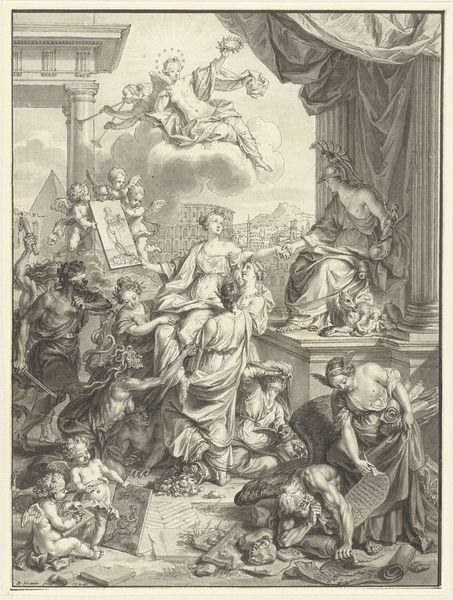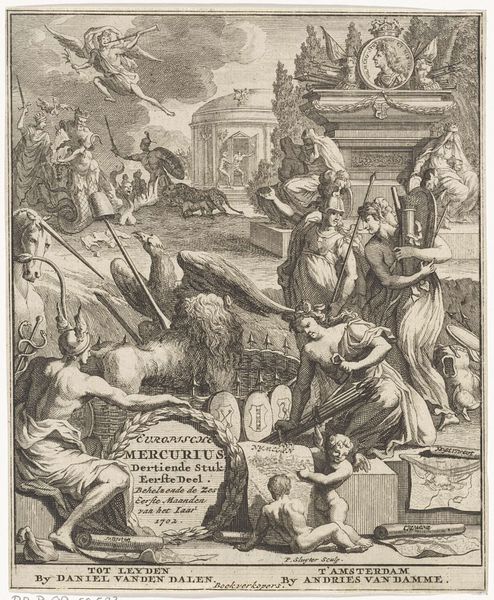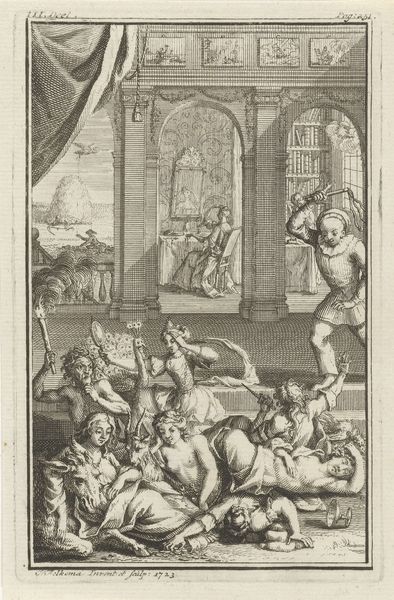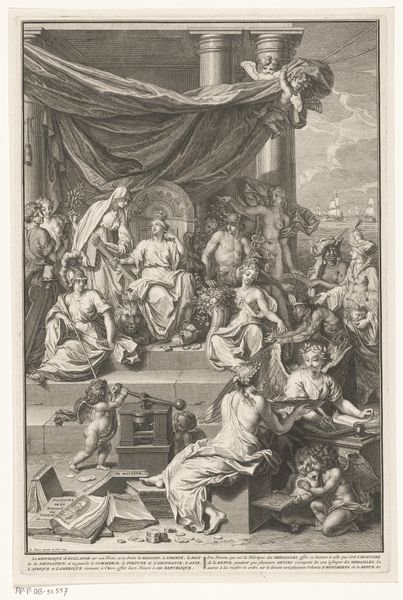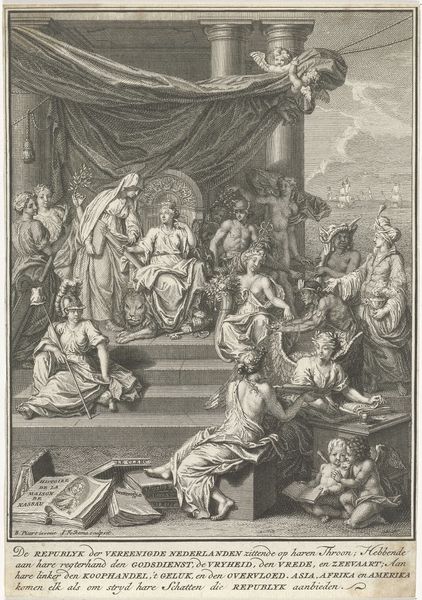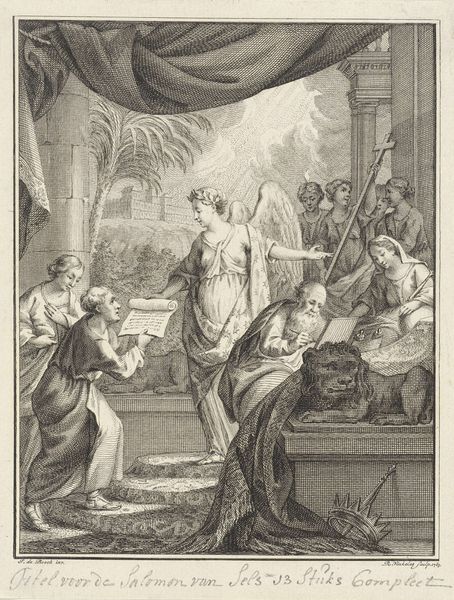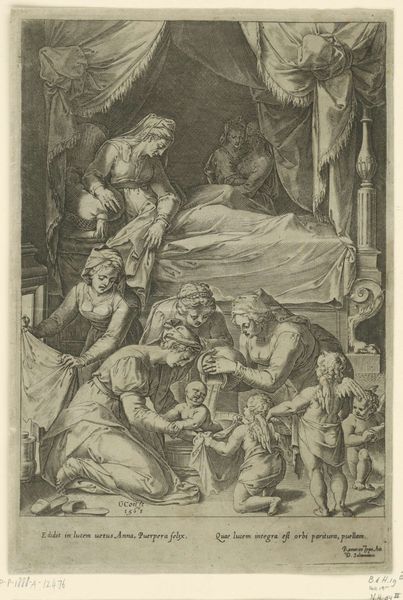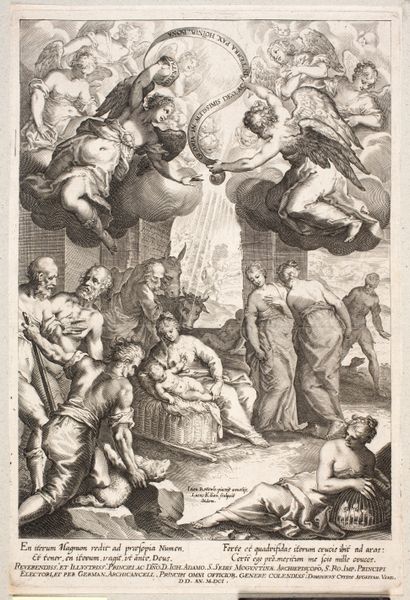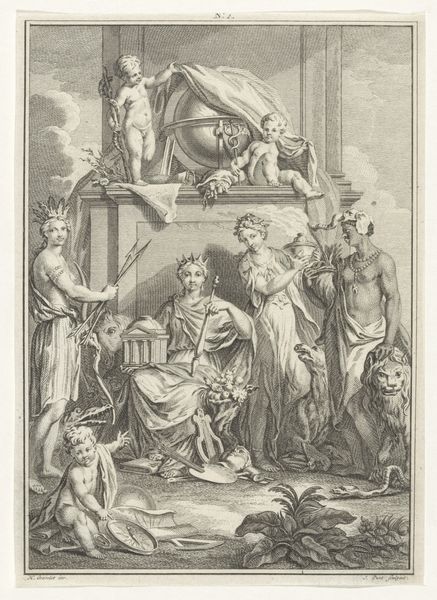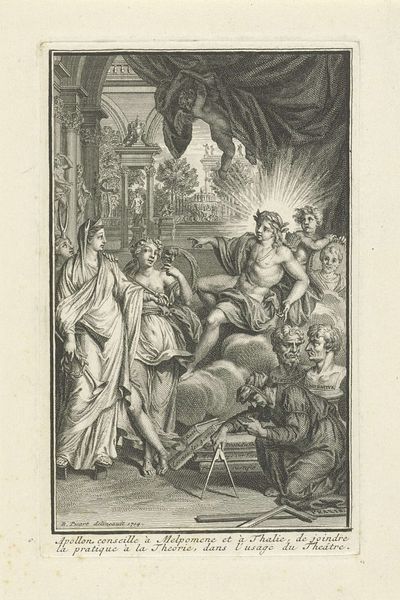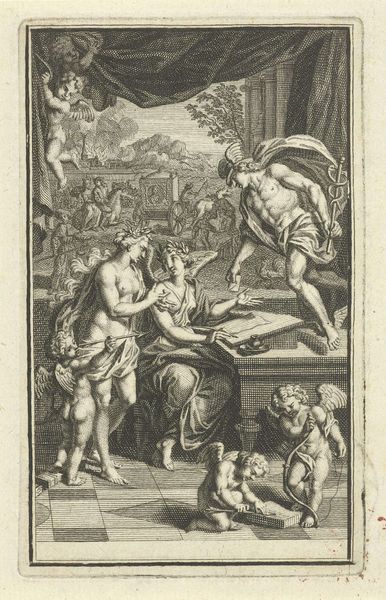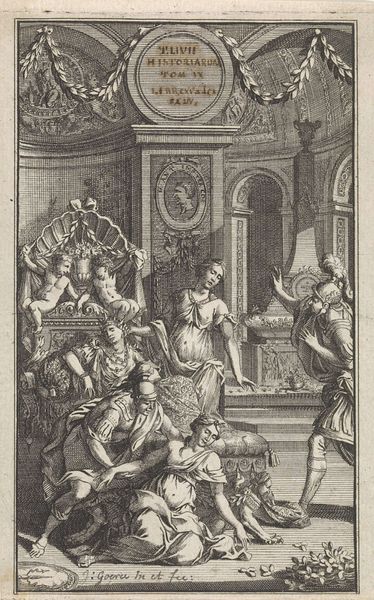
Allegorische voorstelling met Geschiedenis, Vader Tijd en Minerva 1737
0:00
0:00
engraving
#
allegory
#
baroque
#
pen illustration
#
classical-realism
#
figuration
#
pen-ink sketch
#
line
#
history-painting
#
engraving
Dimensions: height 329 mm, width 218 mm
Copyright: Rijks Museum: Open Domain
Editor: This engraving from 1737 by Matthijs Pool, titled "Allegorische voorstelling met Geschiedenis, Vader Tijd en Minerva," feels very formal and a bit overwhelming. There's so much going on! All the figures seem poised and purposeful, and everything is meticulously rendered. How do you interpret this piece? Curator: It's definitely a dense image, isn't it? Its density serves a clear purpose, reflecting the 18th century's fascination with classifying and ordering knowledge. This engraving wasn't created in a vacuum. Consider its purpose: an illustration for an antiquarian lexicon. The figures aren’t just decorative; they’re meant to convey specific ideas about history, time, and wisdom within a framework of classical Roman imagery. Minerva, as the goddess of wisdom and strategic warfare, would appeal to potential wealthy patrons of that period in Europe who considered themselves knowledgeable or with aspirations. Editor: So, it’s designed to present a specific viewpoint, rather than a purely objective illustration? Curator: Precisely. Think about how classical imagery was used to legitimize power and knowledge during this period. The artist carefully selects which elements of history he is focusing on and those that are considered critical elements to the Antiquities Lexicon that the engraving accompanies. Why these symbols of antiquity, and not others? Editor: It's almost like the artist is crafting a visual argument. Looking at it that way, the formality makes more sense. The composition guides you to understand who's more important. Curator: Exactly. The arrangement of the figures on different tiers signifies importance. Now, think about the role of printmaking in disseminating ideas during the Enlightenment. How might an image like this have contributed to shaping public understanding of history and antiquity? Editor: I hadn’t thought about it as part of the media landscape of its time. I guess it suggests how powerful images can be to promote very particular agendas. That's something I'll remember when viewing art from now on. Curator: Indeed. Reflecting on the social context offers a rich way of connecting with an artwork that initially seems remote and inaccessible.
Comments
No comments
Be the first to comment and join the conversation on the ultimate creative platform.
